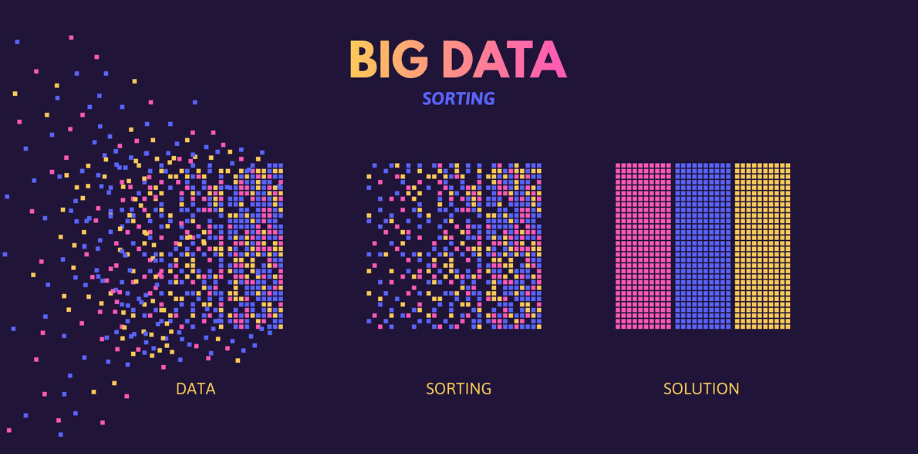Five key principles for data insight success
How can you use data to grow your business? Ian Bobbett, Chief Data Officer at Crimson and George Lynch, Head of Tech Advisory at NashTech (both part of Nash Squared) look at 5 key principles for success. This article first appeared on ComputerWeekly.com.
It’s a moment that no Chief Data Officer (CDO) or other technology leader wants to experience – when a new BI data dashboard is presented to the exec and the reaction around the room is, “But that just doesn’t feel right!”
In today’s business environment, one thing that is not in short supply is data. But managing that data, and turning it into accurate decision-useful insight, is much harder to do. It’s an issue that is more relevant than ever right now as businesses look to deploy AI and Generative AI solutions into their business – data is critical to success.

The data challenge is a theme that consistently comes through in Nash Squared’s annual Digital Leadership Report. The 2023 report showed that only one in four digital leaders rate their organisation as very or extremely effective at using data insights to generate more revenue. This is despite the fact that half of digital leaders see data & analytics as one of the top two deliverers of return on investment.
Across the piece, businesses routinely struggle to get the value they should be getting from data. The picture is similar across small, medium and large enterprises – although medium-sized businesses seem particularly squeezed, with significant volumes of data but not the sophisticated systems to deal with it that some of their larger counterparts have been able to invest in.
So, given these issues, how can businesses begin to get their hands around their reams of data and use it to maximise performance, productivity and insight?
Here are five key principles that we see as fundamental to success.
1. Begin with the impossible. And work back from there
A great data strategy vision needs to be led by the business, not IT, as ultimately it is the business that will be using the data. IT has a critical role to play, but to really make the strategy have impact it needs to come from people who have no preconceived ideas about how it would work, how easy or hard it is to achieve, and – at least initially – cost. It is IT’s role to reverse engineer the desired outcome, and then work with the business to get a balance between dreams and reality.
2. There must be a ‘value exchange’ for the data strategy to work
Another fundamental is that people across the business must have ‘skin in the game’ and a clear incentive to make data work. If capturing, curating and updating data doesn’t help a business area owner achieve their targets and objectives, it’s simply unlikely to happen. It’s when there is a value exchange – when multiple parts of the business benefit in their own different ways from particular sets of data – that the strategy will actually be translated into everyday reality.
This means that, when mapping out the data strategy, it’s essential to consider what the priorities and needs of functions across the business are – and where and how they overlap, interconnect and mutually reinforce each other. These are the points of value exchange and should be supported and enabled by the data architecture design.
3. Data is more than a technical exercise – with many supporting features that need to be right
The value of data lies in how it’s used – so it follows that a successful data strategy requires focus on the efficiencies and opportunities that surround it. This needs to be supported by governance – having clear standards in place around how data is managed, stored and curated. There needs to be clear ownership of data, with the relevant teams taking responsibility for data that falls within their remit.
There must be sufficient support and training in place too, so that staff are equipped with the skills they need to handle the data. Across all of this, what is perhaps the key is instilling a data-oriented culture – the acknowledgement that data matters and that it is everyone’s responsibility to treat it carefully and properly. When data is treated like this, every day across the entire business, it is surprising what a transformative effect it can have.
4. Chief Digital Officer as a change agent not just a technical guru
Needless to say, the role and leadership of the Chief Digital Officer (CDO), or other responsible technology leader, is critical. Too often, we tend to see CDOs appointed or viewed as technical experts. Clearly, good technical knowledge and experience is important – but at the same time, there is an IT team that the CDO can draw on for that.
More important, in our view, is that the CDO has the ability to work as an agent of change, who can help forge the connection between commercial/performance aspects of the business and data & technology. This is the leap that organisations are really looking to make.
It also means that the CDO should have a direct line to the top. In an ideal world, they will regularly be speaking directly to the CEO and/or Board, rather than through the mediation of the CIO or CTO. They need this direct exposure for their own purposes after all – to be effective, they need to be aware of and involved in many key business decisions and challenges.
5. AI makes good data even more important
And then there’s AI. The huge interest in deploying AI (including generative AI) solutions just elevates the importance of good data even further – because without that, AI investments simply won’t work. AI holds enormous potential, and the growing excitement around solutions such as ChatGPT has put predictive analytics and machine learning right back on the agenda, but it’s vital to make sure you’re not trying to run before you can walk.

Get a solid data strategy and structure in place, establish that it works and is giving the business what it needs – and then start thinking about AI. AI-powered solutions can help you get even more out of your data, but it also creates more data of its own and that needs handling and storing.
There is also the risk of confidential data being placed into the public domain if using some GenAI engines. Clear policies on usage that are communicated across the business are therefore needed. We expect the market for private GenAI applications (such as Microsoft’s Co-Pilot or our own BonBon) to mushroom in the years to come.
It has long been said that data is the new oil. It’s certainly true that data is what enables many businesses to keep running in the digital world. While getting data right is a notoriously difficult area – and few businesses would say they have it absolutely right – by following sound principles, and with good technical advice, organisations can make a significant transformation in how data flows around the business, informs decision-making, and drives a more profitable and customer-attuned organisation.
Related posts

Teaser
PostContent Type
Latest NewsPublish date
04/25/2024
Summary
London, [April 2024] Harvey Nash, the leading global technology recruitment business has named Lola Yesufu from Ireland, the winner of its second Global Contractor of the Year Award in rec

by
Harvey Nash UK

Teaser
PostContent Type
Success StoriesPublish date
04/22/2024
Summary
Improving tech diversity through Harvey Nash NextGen solutionFSB Technology is an award-winning sportsbook platform at the forefront of innovation. During periods of significant growth, FS

by
Harvey Nash UK

Teaser
PostContent Type
Success StoriesPublish date
04/19/2024
Summary
Providing a flexible resourcing model for service excellence transformation. The University of Edinburgh were seeking a recruitment partner to support them in delivering a blended model of

by
Harvey Nash UK
Related jobs
Salary
Up to £155.97 per day + Outside IR35
Location
Edinburgh
Sector
Public Sector
Location
Edinburgh & Lothians
Job Type
Contract
Description
IT Support Officer| 23 Month Contract | (Outside IR35) | Hybrid (Edinburgh) | Starting ASAP Day Rate: £155.97 Job Description:This post offers an excellent opportunity for a highly conscientious indiv
Reference
BBBH104956_1714404770
Expiry Date
01/01/0001

Author
Alan O'Mahony
Author
Alan O'MahonySalary
£500 - £600 per day
Location
Belfast, County Antrim
Sector
Financial Services
Location
Belfast
Job Type
Contract
Description
Senior Business/Finance Manager sought by leading financial services organisation based in Belfast. **Inside IR35 – 3 days a week onsite.** The Business Management team is responsible for the groups o
Reference
BBBH105861_1714403620
Expiry Date
01/01/0001

Author
Alex Reeder
Author
Alex ReederSalary
£200 - £250 per day
Location
Edinburgh
Sector
Digital & Design
Location
Edinburgh & Lothians
Job Type
Contract
Description
Graphic and Motion Designer| 6 Months (Inside IR35)| Hybrid ( Edinburgh)|Harvey Nash’s client is recruiting for a Graphic and Motion Designer on a 6 month contract.Main DutiesCreate dynamic, innovativ
Reference
BBBH105860_1714402984
Expiry Date
01/01/0001

Author
Shauna Cavanagh
Author
Shauna Cavanagh